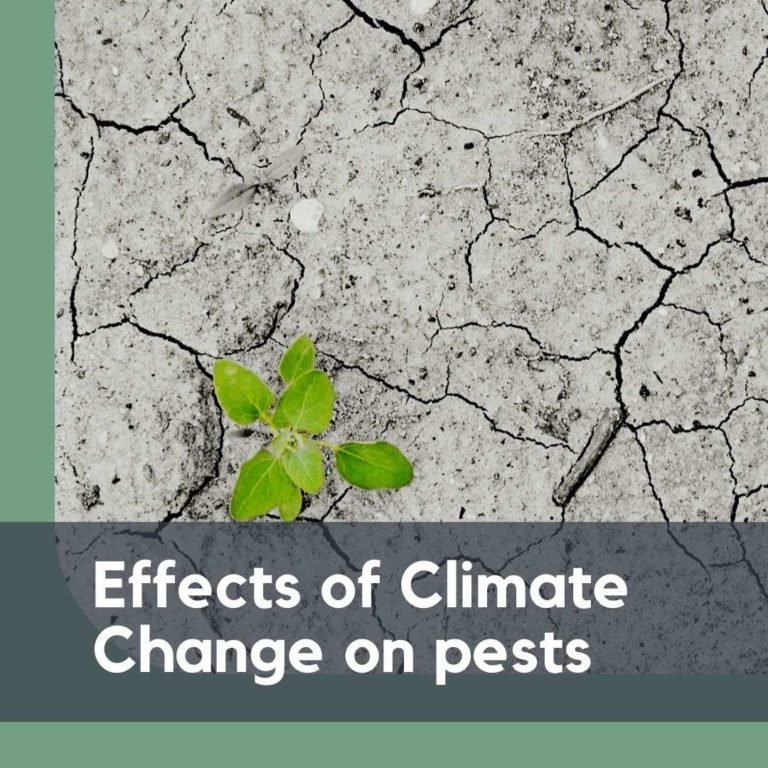


Effects of Climate Change on pests
Effects of Climate Change on Pests The increase in temperatures due to Global Warming alters the biological cycle of pest development, extends the period of time during which they are present in crops, and expands the territories in which they are present. But these are not the only effects of climate change on pests. As the temperature rises, so does the metabolism of insects, increasing the number of generations per season, shorter reproductive cycles and, logically, increasing their population density. More reproductive cycles because pest metabolism is accelerated. Climate change not only means an increase in temperatures, but also in humidity and CO2. And these three increases largely determine the increased incidence of crop pests and diseases. Rising temperatures accelerate the metabolic rate of insects, and thus their reproductive rate. Some studies estimate that an increase of 2 degrees Celsius in the temperate zones of the planet could mean up to 5 additional biological cycles of certain pests. Insects belonging to the order Hemiptera and Thysanoptera (such as bugs and thrips), are the most benefited under these climatic conditions, since the increase in temperature favors their reproductive rate. In addition, the pests appear earlier in the crops (between 5 and 9 days for Carposina sasakii, Grapholita molesta and Phyllonorycter ringoniella in apple crops), and their presence in the crops lasts longer. Soil becomes more uniform in temperatures, therefore pests can live in other habitats. Climate change will increase the risk of pest spread in agricultural and forest ecosystems, especially in the colder Arctic, boreal, temperate and subtropical regions. The range of pests is expanding into new territories. New pests of tropical origin can survive in cold areas now considered temperate. A single unusually warm winter may be enough to favor the establishment of invasive pests in a geographical area. The tomato moth, Tuta absoluta, a tomato pest from South America, first appeared in Europe in 2006 and rapidly spread to almost all Mediterranean and Central European countries. It is a pest that rapidly accelerates its reproductive rate with increasing temperatures. Some pests, such as the budworm, which feeds on a large number of crops such as corn, sorghum and millet, and the Tephritid fruit fly, which damages other crops in addition to fruit, have already spread due to the warmer weather. The codling moth, Spodoptera frugiperda, has a life cycle that ranges from 35 to 61 days. Global warming of the planet causes this life cycle to shorten, increasing the number of generations and lengthening the period in which the pest can be active. New technologies for the new situation in the control of agricultural pests This requires that, in order to face these new challenges, the sector must adopt new ways of working that will allow it to foresee these changes and face integrated pest control and management with greater guarantees. Links Climate change fans spread of pests and threatens plants and crops, new FAO study Climate change impacts on twenty major crop pests in Central Asia, the Caucasus and Southeastern Europe, FAO
Software de control de plagas
Contacto
- info@futurcrop.com
- +34 931 282 892
- Françesc Maciá 41 - Sabadell (Barcelona)
Copyright © 2016. Todos los derechos reservados
Software de control de plagas
Contacto
- info@futurcrop.com
- +34 931 282 892
- Françesc Maciá 41 - Sabadell (Barcelona)
Copyright © 2016. Todos los derechos reservados
